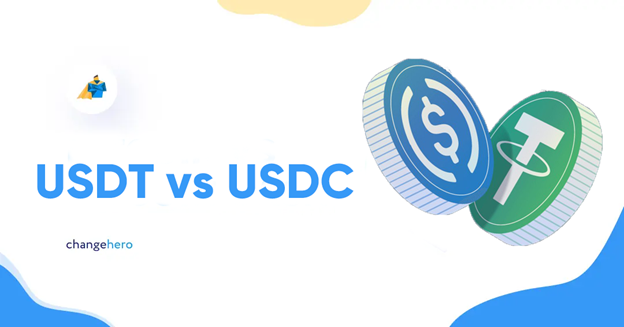Cryptocurrencies have been gaining popularity in recent years, and with that comes the rise of stablecoins. Stablecoins are cryptocurrencies that are pegged to a stable asset, such as the US dollar. Two of the most popular stablecoins are USDT and USDC. In this article, we will explore what USDT to USDC are, how they work, and the benefits and concerns of using them.

What is USDT or USDC?
USDT, or Tether, is a stablecoin that is pegged to the US dollar. It was launched in 2014 and is issued by Tether Limited. USDT is designed to maintain a 1:1 ratio with the US dollar, meaning that for every USDT token issued, there is an equivalent amount of US dollars held in reserve.
USDC, or USD Coin, is another stablecoin that is pegged to the US dollar. It was launched in 2018 and is issued by Circle, a financial technology company. Like USDT, USDC is designed to maintain a 1:1 ratio with the US dollar, meaning that for every USDC token issued, there is an equivalent amount of US dollars held in reserve.
How does USDT or USDC work?
USDT and USDC are both ERC-20 tokens, which means that they are built on the Ethereum blockchain. When a user purchases USDT or USDC, they are essentially buying a token that represents a US dollar held in reserve. The tokens can be used to make purchases or transfers, just like any other cryptocurrency.
The process of issuing USDT or USDC involves the deposit of US dollars into a reserve account. The tokens are then issued to users in exchange for the US dollars held in reserve. When a user wants to redeem their USDT or USDC for US dollars, they can do so by sending the tokens back to the issuer, who will then send the equivalent amount of US dollars from the reserve account.
Comparison of USDT and USDC
While both USDT and USDC are stablecoins that are pegged to the US dollar, there are some differences between the two. One of the main differences is the companies that issue them. USDT is issued by Tether Limited, while USDC is issued by Circle. Tether Limited has faced some controversy in the past, with some critics questioning whether they actually hold the US dollars in reserve that they claim to.
Another difference between USDT and USDC is the level of transparency. USDC is known for being more transparent than USDT, with Circle providing regular attestations from a top accounting firm to prove that the US dollars held in reserve match the number of USDC tokens in circulation.
Benefits of using USDT or USDC
One of the main benefits of using USDT or USDC is their stability. Because they are pegged to the US dollar, their value is not subject to the same volatility as other cryptocurrencies. This makes them a popular choice for traders who want to hedge against market fluctuations.
Another benefit of using USDT or USDC is their speed and low transaction fees. Because they are built on the Ethereum blockchain, transactions can be processed quickly and at a low cost.
Concerns around USDT or USDC
Despite their benefits, there are some concerns around USDT and USDC. One of the main concerns is the level of transparency around the reserves held by the issuers. While USDC is known for being more transparent than USDT, there are still questions around whether the reserves held by the issuers are sufficient to back the number of tokens in circulation.
Another concern is the potential for regulatory scrutiny. Because stablecoins like USDT and USDC are designed to maintain a 1:1 ratio with the US dollar, they could be seen as a form of money transmission. This could subject the issuers to regulatory oversight and potentially impact the value of the tokens.
Conclusion
USDT and USDC are two of the most popular stablecoins in the cryptocurrency market. They offer stability, speed, and low transaction fees, making them a popular choice for traders and investors. However, there are concerns around the transparency of the reserves held by the issuers and the potential for regulatory scrutiny. As with any investment, it is important to do your own research and understand the risks before investing in USDT or USDC.
